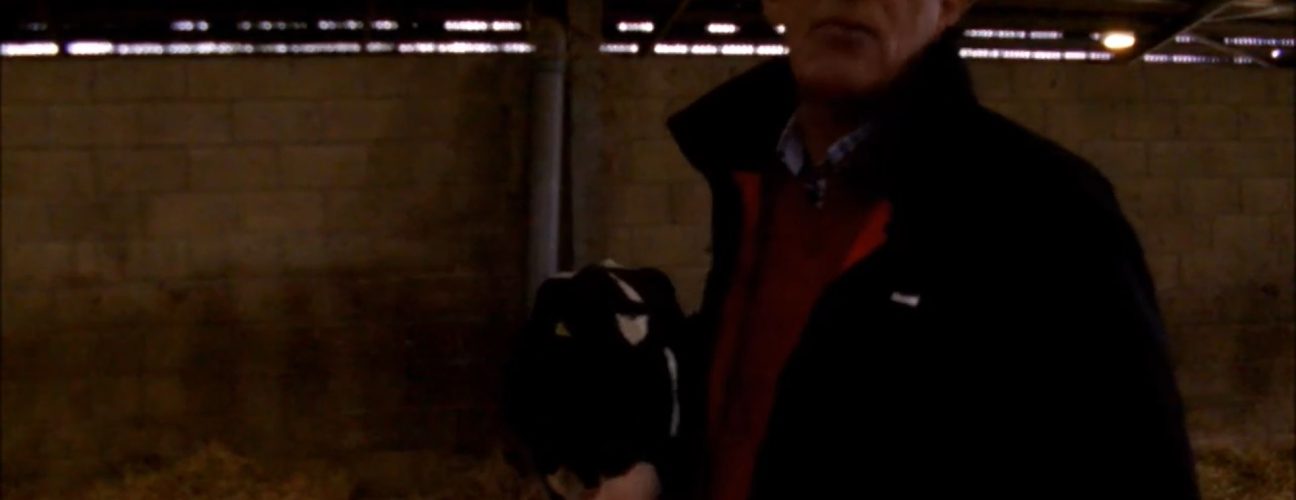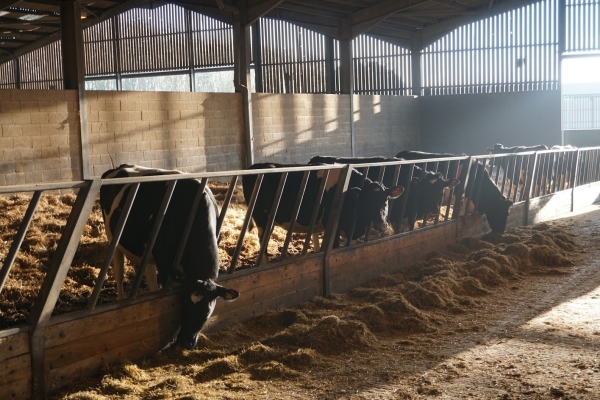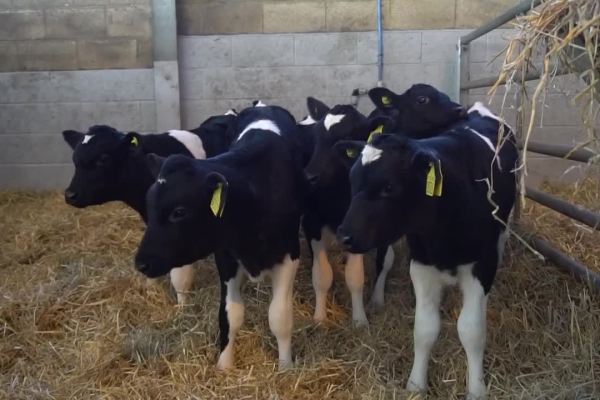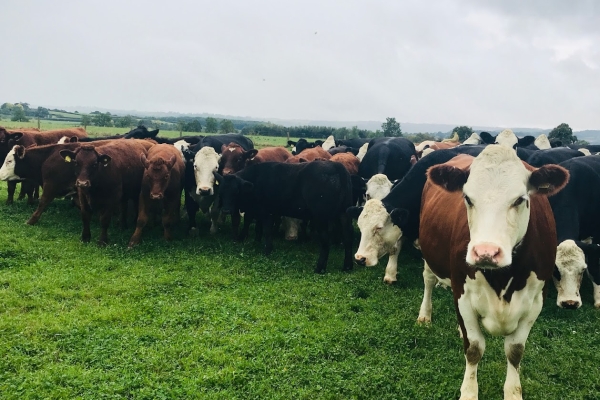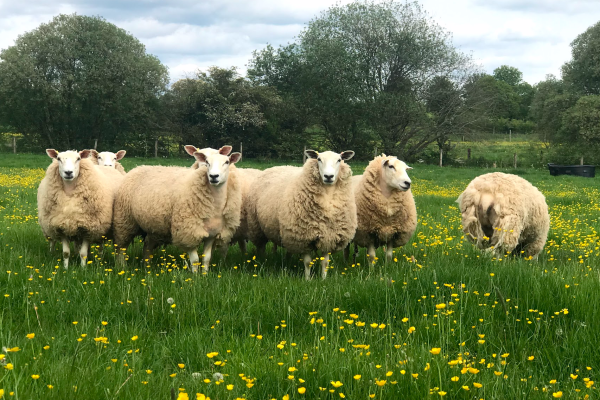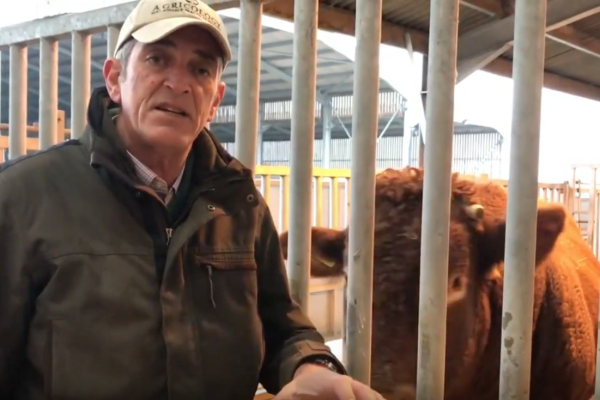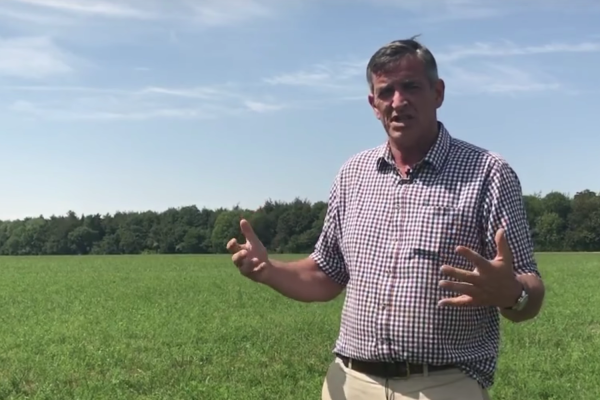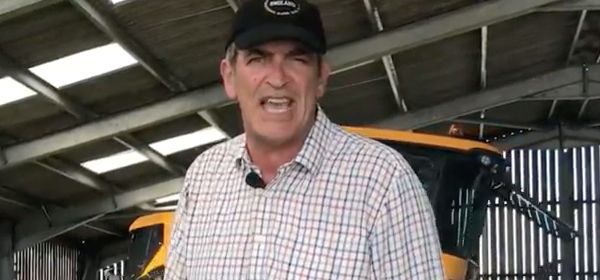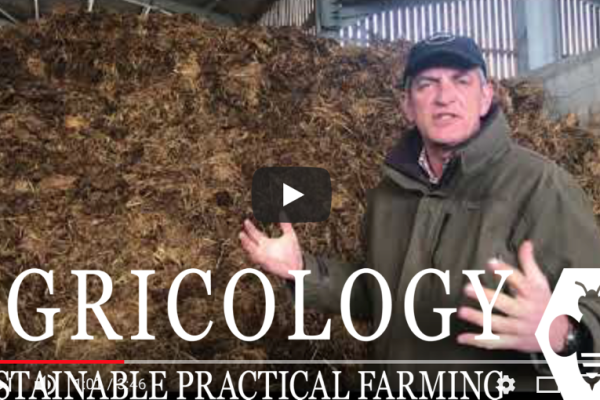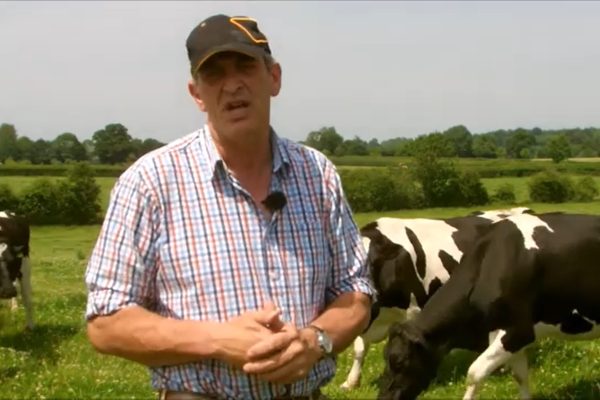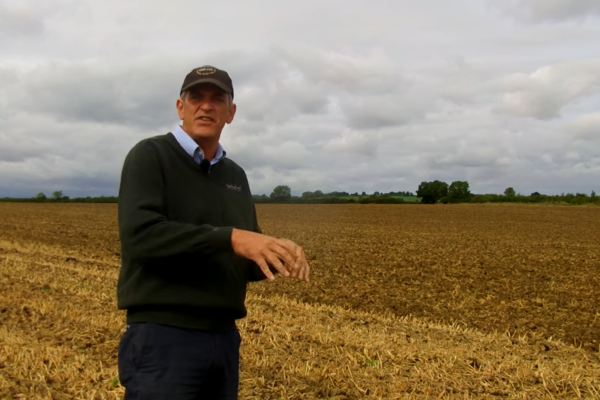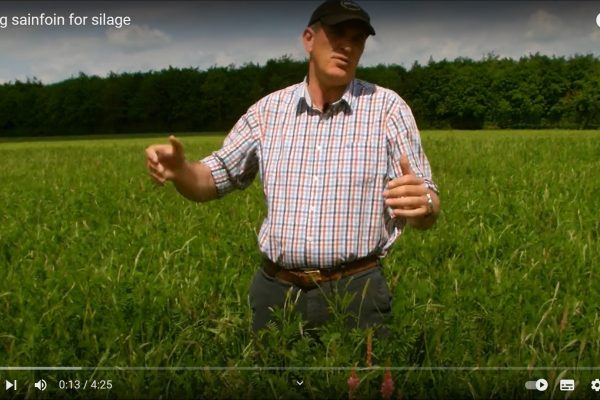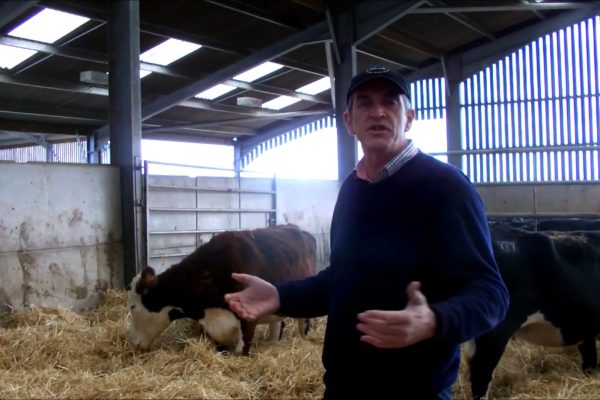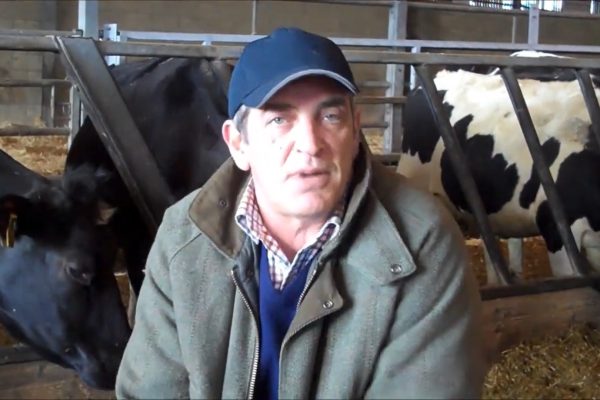Rearing dairy cattle
Richard visits the dairy barn to talk about rearing calves on the farm.
- The farm has a long calving period; from September until the following April. This allows for milk to be produced all year round for the creamery.
- The first calves (born in September 2016) will be replacement heifers which can be brought into the system very early on in 2018 to go to the bull. The remaining calves are from cows mated with Herefords. The majority of the cows are artificially inseminated with Hereford semen.
- The calves are born in deep straw yards and after a day or so, the cow and calf are moved to a single pen. The calves then spend 5 days with their mothers, after which they are weaned. This 5 day period allows the calves to take all the colostrum that they need from their mothers. Richard explains that in his 10 years on the farm he has never had a calf with pneumonia, and he believes that this is because of all the colostrum they get in those first 5 days.
Richard moves on to look at some calves and explains how they are fed.
- After the calves have been weaned they are moved in groups of 5 or 6 into pens in the barn. They are given plenty of deep straw for bedding and soft meadow hay to eat to encourage them to begin ruminating early on.
- To meet organic standards, you need to feed a calf with fresh milk for 12 weeks. The calves get 2.5 litres of fresh milk morning and night. They are fed the milk in specially designed feeders which are easy to wash down every day. Richard explains that he makes quite a big investment in the calves with the milk but it is worth it because they flourish on it. Along with the milk and hay, the calves are fed hard feed from day 1 in the pen.
- As the calves get older, they are moved down the line of pens until they are old enough to go out into outdoor pens. As soon as the weather is right in the spring, they will be turned out to graze on grass.
- It is a tried and tested method of rearing calves and Richard explains how happy he is with this year’s calves.
The information contained above reflects the views of the author/s and does not necessarily reflect that of Agricology and its partners.
Related articles
Insights and demonstration into cattle foot trimming at Daylesford Organic Farm.
Richard Smith, Farms Manager for Daylesford Organic, explains how they rear their Friesian calves at Daylesford. This includes having a calf stay with its mum...
Richard Smith of Daylesford Organic Farms talks about grass leys and how they put them into stubble, and undersowing grass leys into cereal crops
In this month's Agricology vlog, Richard Smith, Farms Manager for Daylesford Organic, discusses a method they use on the farm called Fecpak which allows them...
Richard Smith discusses strategies for choosing a bull, including analysing estimated breeding value to assess lineage and breeding potential
Richard Smith (Farm Manager at Daylesford Organic Farm) discusses everything sainfoin; when to cut for silage, how it is withstanding drought conditions, how to drill,...
In this month's Agricology vlog, Richard Smith, Senior Farm Manager at Daylesford Organic Farm, discusses the production of grass silage in an organic system. He...
In this months Agricology vlog, Richard Smith, Senior Farms Manager at Daylesford Farm, suggests that by demonstrating full transparency in farming practices we are in the...
Richard Smith, Farm Manager for Daylesford Farm discusses using manure compost in an organic system and the benefits, including how he prepares the manure, treatment...
This month Richard explains how a sustainable dairy cow has been bred at Daylesford.
In September’s vlog (filmed in August), Richard Smith - Farm Manager for Daylesford Organic - talks us through preparing a field to put it back...
This month Richard explains the process of making sainfoin silage at Daylesford. Starting off in the field he describes how the crop has been established...
This month Richard talks about the beef cattle at Daylesford, giving a few pointers on feeding regimes and calving management
In our first Agricology video blog Richard Smith, the Steering Group Chairman, introduces us to the dairy herd he manages at Daylesford Organic Farm.
